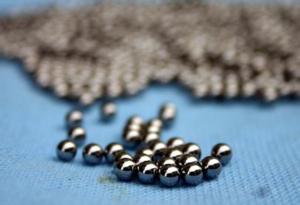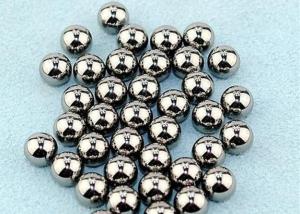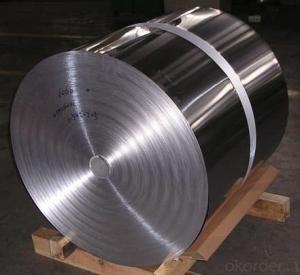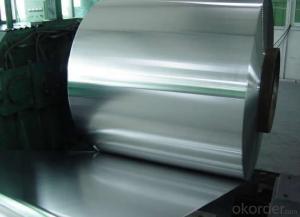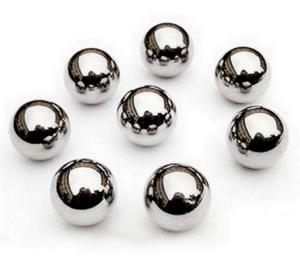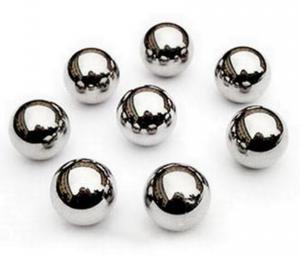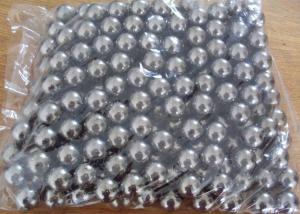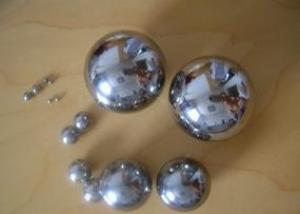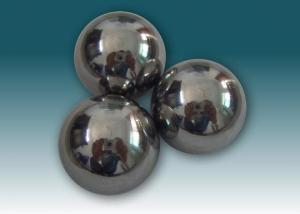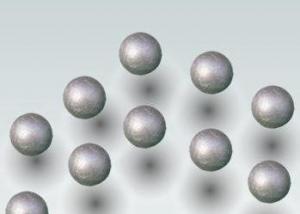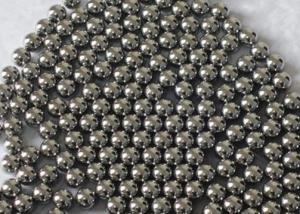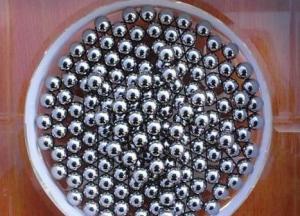Stainless Steel Balls-HF,AISI304, 316L, 420C, 430, 440C
- Loading Port:
- Tianjin Port
- Payment Terms:
- TT or LC
- Min Order Qty:
- 1 Ton pc
- Supply Capability:
- 500 Tons Per Month pc/month
OKorder Service Pledge
OKorder Financial Service
You Might Also Like
Main Products Of Stainless Steel Ball-HF,AISI304, 316L, 420C, 430, 440C:
1. Material: AISI304, 316L, 420C, 430, 440C
2. Steel ball, with material AISI 1008-1086.
3. Chrome steel ball,with material: AISI52100
4. Flying saucer steel ball
5. Precision casting, including auto parts, machine parts, hardware handles, etc.
Character Of Stainless Steel Ball-HF,AISI304, 316L, 420C, 430, 440C:
Detail Specification Of Stainless Steel Ball-HF,AISI304, 316L, 420C, 430, 440C:
1.The Grade of our products is from G10 to G1000
2.The dimension is from 0.5 mm to 25.4 mm.
3.The products from us are widely used in several industries, such as hardware, sliders, ball bearing lead screw, wheels, toys, bicycles, bearings, trust bearings pulleys, chemical industries, etc.
Item | SS304,316L,420C,440C Stainless steel ball |
Category | Stainless Steel Ball |
Material | AISI 420 430 440 SS304 316L |
Size | 0.5mm--25.4mm, 1/4",3/16",5/32",1/8",7/32",5/16",7/8",1" |
Grade | G100-G3000 |
Hardness ( HRC) | HRC58-65 |
Application | Bicycle, bearing, pulley, slide, handcraft, shelf, luggage, hardware, grinding media |
Standard | GB/T-308-2002, GB/T1148-93 |
Matched Standard | DIN, JIS, ASME |
Certification | ISO |
Packing | Oily packing in pouch packing,plastic/tin box packing 1, 25kg/carton with steel pallet packing 2,25kg/carton without steel pallet packing 3,10kg/box then in wooden case packing 4,250kg/ steel drum packing or according to customers' requirement |
Place of original | Shandong province, China |
Delivery | Within 30 days or confirmed while placing order |
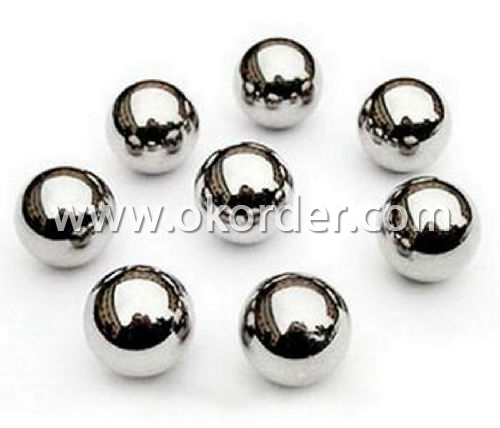
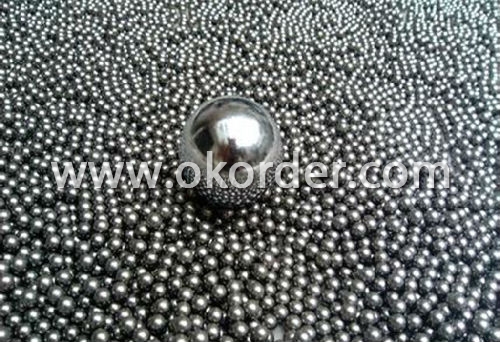
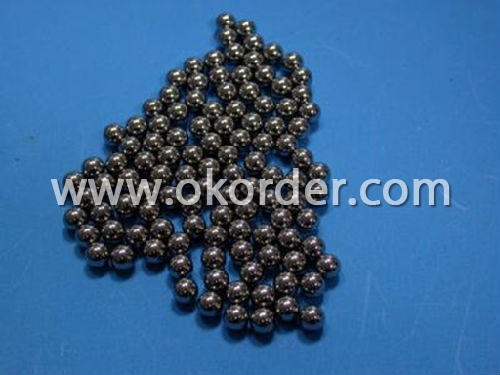
- Q:How do stainless steel balls compare to other types of balls, such as chrome steel or ceramic?
- Stainless steel balls differ from other types of balls, such as chrome steel or ceramic, in several ways. Firstly, stainless steel balls are known for their excellent corrosion resistance. This makes them ideal for applications in wet or corrosive environments, as they are less likely to rust or deteriorate over time compared to chrome steel or ceramic balls. Secondly, stainless steel balls have high hardness and strength properties. This means they can withstand heavy loads, high temperatures, and intense impact without deforming or breaking. Chrome steel balls also have good hardness and strength, but ceramic balls are relatively less durable and prone to cracking under extreme stress. Thirdly, stainless steel balls have good dimensional stability, ensuring consistent performance even under changing conditions. This characteristic is particularly beneficial in precision applications where accuracy and reliability are crucial. Chrome steel balls and ceramic balls also offer good dimensional stability, but stainless steel balls are often preferred for their superior corrosion resistance. Moreover, stainless steel balls have a lower density compared to chrome steel balls, making them lighter. This advantage can be significant in certain applications where weight reduction is desired, such as in aerospace or automotive industries. Ceramic balls, on the other hand, are generally lighter than both stainless steel and chrome steel balls. Lastly, it is important to consider cost when comparing these different types of balls. Stainless steel balls are typically more affordable than ceramic balls but may have a higher price point than chrome steel balls. Therefore, the choice between stainless steel, chrome steel, or ceramic balls often depends on the specific application requirements, including factors such as corrosion resistance, durability, dimensional stability, weight, and budget constraints.
- Q:How do stainless steel balls handle rolling friction?
- Due to their smooth surface and low coefficient of friction, stainless steel balls exhibit high resistance to rolling friction. The smoothness of the stainless steel surface reduces the contact area between the ball and the surface it rolls on, thereby minimizing the friction generated during rolling. Moreover, stainless steel possesses a low coefficient of friction, implying that less force is needed to initiate and sustain rolling motion. Consequently, stainless steel balls roll smoothly and efficiently, resulting in minimal energy loss caused by friction. As a result, they are ideal for applications that demand low rolling friction, including ball bearings, precision instruments, and diverse mechanical systems.
- Q:Can stainless steel balls be used in ball valves or other types of valves?
- Indeed, ball valves, along with other types of valves, can make use of stainless steel balls. The reason behind this preference lies in the remarkable corrosion resistance and durability exhibited by stainless steel, which makes it a frequently employed material for valve components. Particularly in situations requiring protection against chemical or environmental corrosion, stainless steel balls prove to be a fitting choice. Their usage in ball valves ensures both a secure seal and a seamless operation. Moreover, their capacity to endure elevated temperatures renders them appropriate for a multitude of industrial processes. In essence, stainless steel balls offer a versatile solution for valve applications and are extensively utilized across the industry.
- Q:Are stainless steel balls resistant to chloride corrosion?
- Yes, stainless steel balls are highly resistant to chloride corrosion.
- Q:How do stainless steel balls perform in cleanroom environments?
- Due to their unique characteristics and properties, stainless steel balls are highly suitable for cleanroom environments. In cleanrooms, where minimal particulate contamination is essential, stainless steel balls are an ideal option. To begin with, the resistance of stainless steel balls to corrosion is crucial in cleanroom environments that prioritize cleanliness and sterility. These balls can withstand exposure to chemicals, solvents, and cleaning agents without deteriorating, ensuring long-term performance and reliability. Additionally, stainless steel balls possess excellent mechanical properties. They offer high hardness, strength, and durability, making them suitable for various applications within cleanrooms. These balls can endure heavy loads, repetitive movements, and impact forces without deformation or damage, ensuring consistent performance and longevity. Moreover, the smooth surface finish of stainless steel balls is crucial in cleanrooms. Any roughness or irregularities can trap particles and compromise cleanliness, but stainless steel balls' smoothness prevents the accumulation of contaminants, ensuring a clean and sterile environment. Furthermore, stainless steel balls have low magnetic permeability, making them appropriate for cleanroom environments that require minimal magnetic interference. Their low magnetic properties prevent the attraction and accumulation of ferrous particles, guaranteeing a contamination-free atmosphere. In addition, stainless steel balls are easy to clean and maintain, contributing to the cleanliness of the environment. They can be easily sterilized, washed, or wiped down using standard cleaning procedures without compromising their integrity or performance. In summary, stainless steel balls are an excellent choice for cleanroom environments due to their corrosion resistance, mechanical properties, smooth surface finish, low magnetic permeability, and ease of maintenance. These qualities make them well-suited for applications that demand cleanliness, sterility, and reliability.
- Q:Can stainless steel balls rust or corrode?
- Although stainless steel balls are renowned for their exceptional resistance to corrosion, they can still experience some degree of rust or corrosion under certain circumstances. The term "stainless" actually denotes the steel's ability to resist staining rather than its complete invulnerability to corrosion. Stainless steel, an alloy primarily composed of iron and chromium, sometimes contains additional elements like nickel or molybdenum. The presence of chromium in stainless steel creates a thin, protective layer of chromium oxide on the surface, which acts as a barrier against corrosion. This layer possesses the ability to self-heal, meaning that if it sustains any scratches or damage, it will regenerate to safeguard the underlying metal. Nevertheless, stainless steel balls can still rust or corrode when subjected to harsh environments or if their protective layer is compromised. Exposure to saltwater, high humidity, acidic or alkaline environments, and certain chemicals can accelerate the corrosion process. Furthermore, physical damage or scratches can disrupt the protective oxide layer, rendering the steel more susceptible to rusting. To minimize the risk of rust or corrosion, it is crucial to select the appropriate grade of stainless steel for the specific application. Different grades offer varying levels of corrosion resistance, ensuring optimal performance in different environments. Regular cleaning and maintenance also play a vital role in preventing rust and corrosion on stainless steel balls. Simple practices like wiping away dirt and moisture, avoiding abrasive cleaners, and promptly repairing any surface damage can significantly prolong the lifespan of stainless steel balls and maintain their corrosion resistance. In conclusion, stainless steel balls possess high resistance against rust and corrosion, but they are not entirely impervious to these processes. Understanding the environmental conditions and implementing proper care and maintenance measures can guarantee the durability and performance of stainless steel balls.
- Q:Can stainless steel balls be used in water treatment applications?
- Indeed, water treatment applications can utilize stainless steel balls. Due to its exceptional resistance to corrosion, stainless steel proves to be an appropriate material for water treatment procedures. These applications frequently entail the elimination of impurities, purification, and filtration, where stainless steel balls serve a purpose in different equipment like valves, pumps, and filters. The enduring nature of stainless steel, impervious to the chemical composition of the water, ensures the balls remain undamaged. Moreover, stainless steel balls are renowned for their robustness and ability to withstand deterioration, rendering them ideal for prolonged usage within water treatment applications.
- Q:Stainless steel ball, one, two, three pieces of internal and external structure what is the difference?
- Mainly from the valve structure to classify, a piece of ball valve is the valve body is a whole
- Q:How do stainless steel balls perform in high-radiation environments?
- Due to their exceptional resistance to corrosion and mechanical properties, stainless steel balls generally exhibit strong performance in high-radiation environments. The presence of chromium, nickel, and molybdenum in stainless steel compositions contributes to their high resistance to oxidation and corrosion, making them appropriate for applications in nuclear power plants, medical devices, and the aerospace industry, where radiation exposure is a concern. In environments with high radiation levels, stainless steel balls maintain their structural integrity and dimensional stability, as they do not easily swell or become brittle. Compared to other materials, stainless steel experiences relatively low damage from radiation, ensuring consistent performance and prolonged longevity even with prolonged radiation exposure. Furthermore, stainless steel balls possess a high melting point, enabling them to endure the elevated temperatures commonly associated with radiation-intensive environments. This characteristic guarantees that the balls retain their shape and mechanical strength, preventing deformation or failure even in extreme conditions. Additionally, stainless steel balls display outstanding wear resistance, hardness, and low friction properties, all of which are vital in high-radiation environments where precision and reliability are paramount. These balls can endure harsh conditions and continue to function effectively, thereby reducing the risk of failure or malfunction. It should be noted that the specific performance of stainless steel balls in high-radiation environments may vary depending on the grade of stainless steel utilized and the intensity and duration of radiation exposure. As a result, it is imperative to select the appropriate stainless steel grade based on the specific requirements and radiation levels of the particular environment. Conducting comprehensive testing and seeking guidance from experts can help guarantee the optimal performance and durability of stainless steel balls in high-radiation environments.
- Q:Do stainless steel balls have a high tolerance for misalignment?
- Yes, stainless steel balls typically have a high tolerance for misalignment due to their hardness, durability, and resistance to corrosion. They are capable of withstanding misalignment to a certain extent without compromising their performance or functionality.
1. Manufacturer Overview |
|
|---|---|
| Location | Guangzhou,China |
| Year Established | 2001 |
| Annual Output Value | Above US$0.5 Million |
| Main Markets | Southeast Asia, Europe |
| Company Certifications | ISO 9001:2008; |
2. Manufacturer Certificates |
|
|---|---|
| a) Certification Name | |
| Range | |
| Reference | |
| Validity Period | |
3. Manufacturer Capability |
|
|---|---|
| a)Trade Capacity | |
| Nearest Port | Shanghai |
| Export Percentage | 30% |
| No.of Employees in Trade Department | 10 People |
| Language Spoken: | English;Chinese |
| b)Factory Information | |
| Factory Size: | Above 30,000 square meters |
| No. of Production Lines | Above 7 |
| Contract Manufacturing | OEM Service Offered;Design Service Offered |
| Product Price Range | Average |
Send your message to us
Stainless Steel Balls-HF,AISI304, 316L, 420C, 430, 440C
- Loading Port:
- Tianjin Port
- Payment Terms:
- TT or LC
- Min Order Qty:
- 1 Ton pc
- Supply Capability:
- 500 Tons Per Month pc/month
OKorder Service Pledge
OKorder Financial Service
Similar products
New products
Hot products
Related keywords
